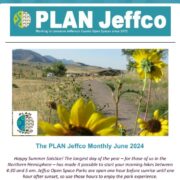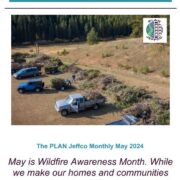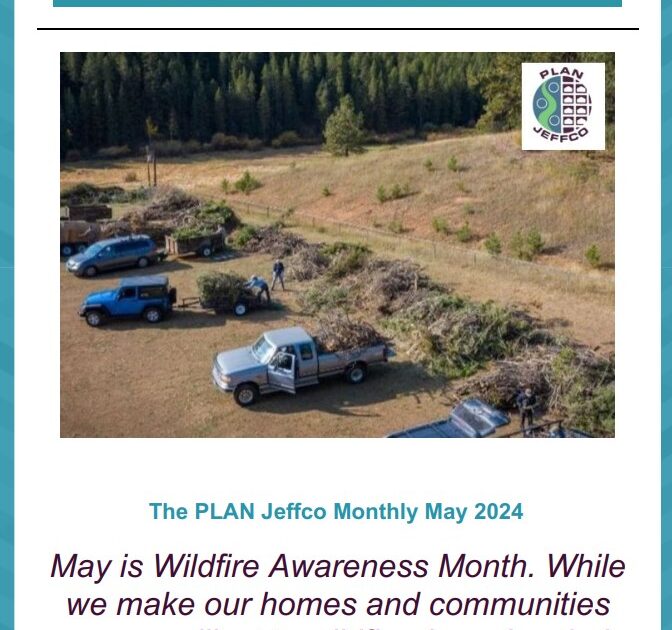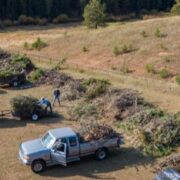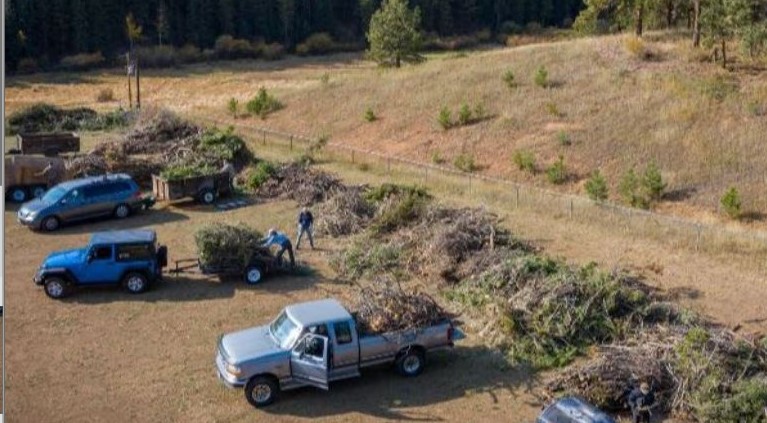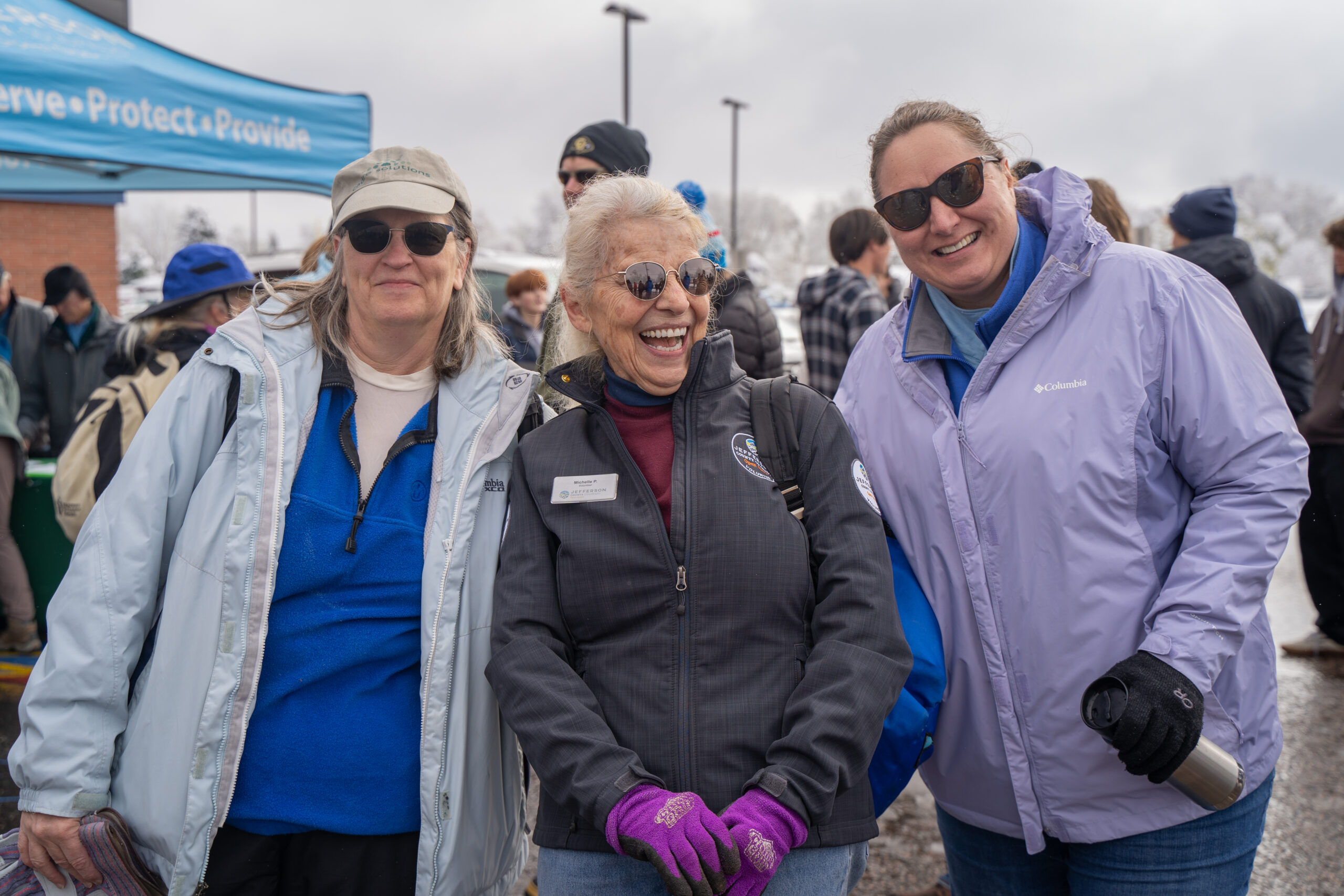
Your PLAN Jeffco Board members (left to right) Cathi Schramm, Michelle Poolet, and Courtney App, get ready to head out into Crown Hill Park to plant trees and shrubs.
What were you doing on the Saturday before Earth Day, 2024? Three of your PLAN Jeffco Board members joined 124 other Jeffco Open Space volunteers to plant more than 350 (some say as many as 600?) native trees, shrubs and forbs (grass plugs) at Crown Hill Open Space Park, along with multiple patches of native wildflowers.
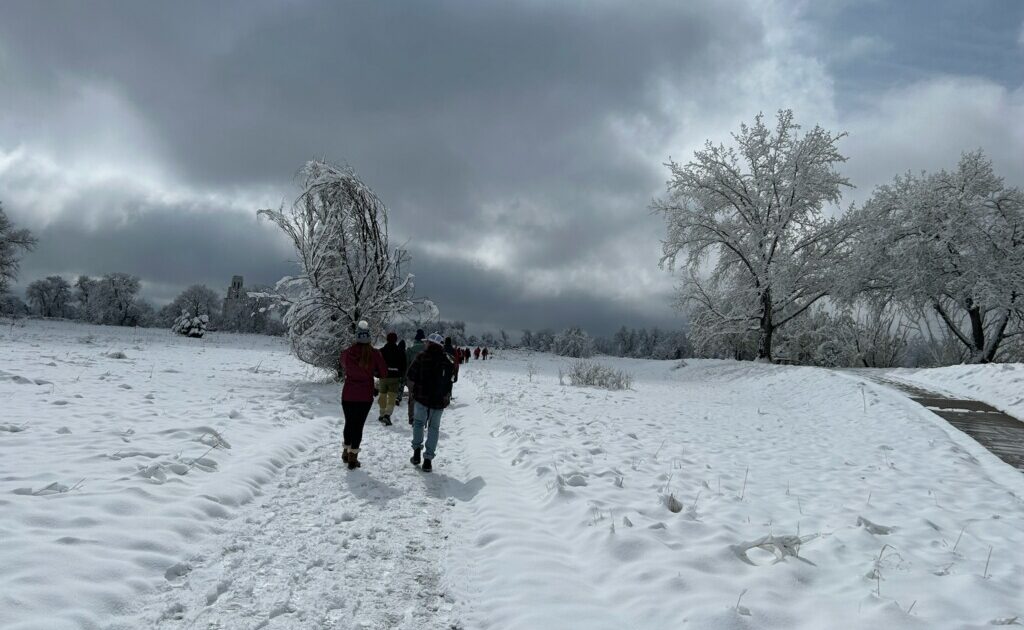
The day was dark and gloomy, but the planting crew trudged on through the snow and mud…
Despite the cold and snow, 127 conservation enthusiasts weathered the chilly temperatures, including 50 Columbine High School students. Traipsing through the snow and mud, lead by JCOS Natural Resource and Trails staffers, we got the job done before the snowfall resumed in the early afternoon.
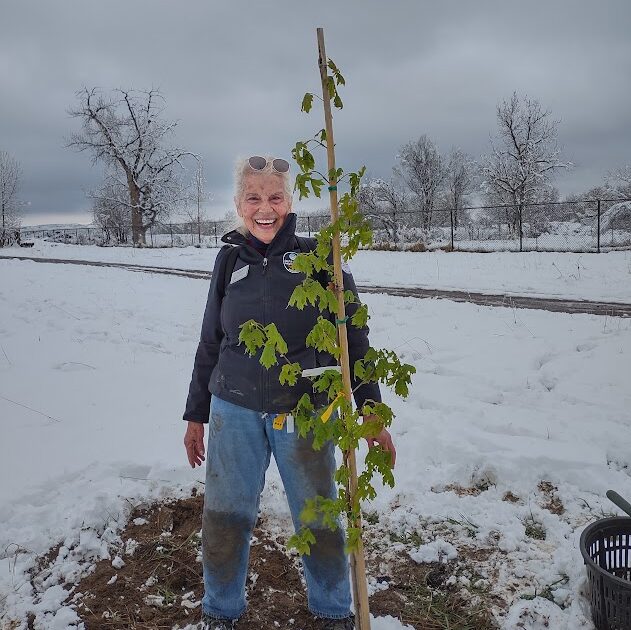
One more Rocky Mountain Glow maple tree planted — hurray!
Initial success was measured by the feeling of accomplishment as a tree – in this case, a Rocky Mountain Glow maple – went into the ground. With luck and average annual rainfall (the trees on the east end of the park will not get any supplimental water), this maple will grow 20 to 30 feet tall, and will bear reddish-gold leaves in the fall. The chokecherry, wax current, rabbit brush and potentilla will grace the park with their flowers and fruit, while providing food and shelter for the smaller native inhabitants of the park.
The morning’s wet and cold and muddy activities wound up with a hot lunch buffet, catered by Illegal Pete’s and served by staffers from the JCOS Communications Team. The food was delicious – roasted meats, rice and beans, and Pete’s famous fajita and primavera veggies were top of the line, with plenty to go around. To top off the meal, the chocolate chip cookies were baked to the chewy stage, so good that they begged you to have another one.
It might be safe to say that, despite the inclement conditions, everyone at the Earth Day event had a good time.
Our thanks to JCOS and the Natural Resource, Trails and Communications teams for organizing and executing this 2024 Earth Day activity, and for upholding the meaning and intent of Earth Day.
From National Geographic Education encyclopedia: “Earth Day is an annual celebration that honors the achievements of the environmental movement and raises awareness of the need to protect Earth’s natural resources for future generations. Earth Day is celebrated on April 22 in the United States and on either April 22 or the day the spring equinox occurs throughout the rest of the world.”
https://education.nationalgeographic.org/resource/earth-day/

Miss Mountain Manners says: “This coming summer, when you’re strolling around Crown Hill Open Space park, look for native wildflowers on the north side, along 32nd Avenue, across from Wheat Ridge High School — but don’t pick the flowers! In the fall, as you walk the trails on the southeast side of the park, please stop and admire the red-gold leaves of the young maple trees and the brushy golden flowers of the rabbitbrush. Be proud of being a part of Jeffco Open Space.”
The post Earth Day 2024 Fun at Crown Hill appeared first on PLANJeffco.

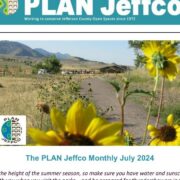

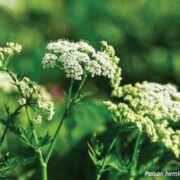
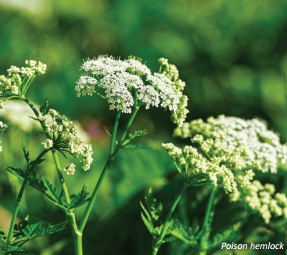 It’s time for a change of pace. Today we’re going to talk about two invasive plants that look so similar but which have drastically different consequences. Both can be found in our Open Space parks.
It’s time for a change of pace. Today we’re going to talk about two invasive plants that look so similar but which have drastically different consequences. Both can be found in our Open Space parks.
